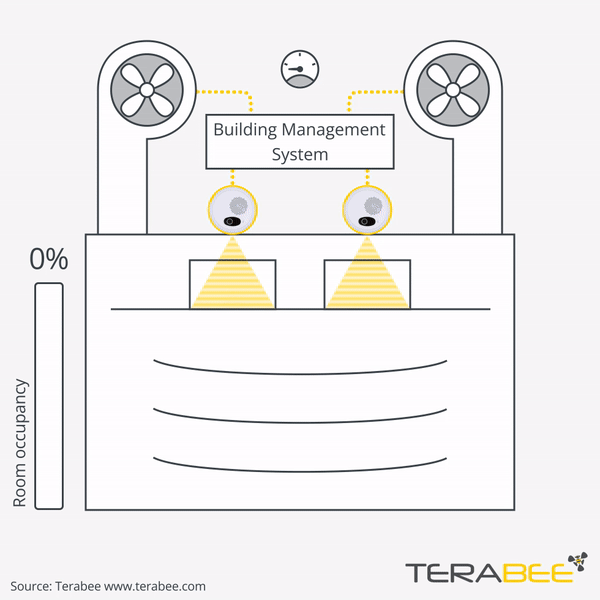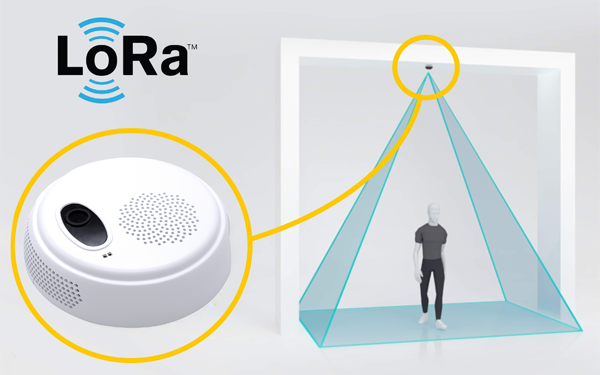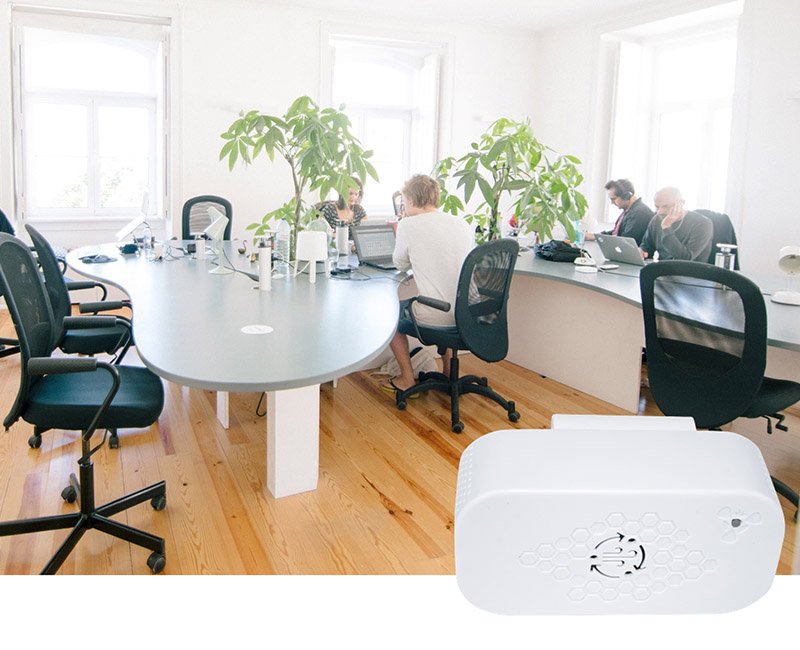Creating healthier and more productive environments. Smart buildings offer better working environments, efficiency savings and can help optimize building use.
Smart building technologies offer a number of possibilities, including improving air quality, monitoring occupancy and reducing unnecessary heating use.
Recent research by the World Health Organization (WHO) has found that ‘poor air quality standards’ are responsible for the premature deaths of about 6.5 million people and about 600,000 people in the WHO European region. (1) As a way of reducing these unnecessary deaths and illnesses, building managers can find ways to improve indoor air quality. Smart buildings offer one way to do just that.
How do smart buildings work?
A smart building is one that makes use of data to make decisions as part of a feedback loop.
This feedback loop works like this: a sensor makes a measurement, the data is transmitted to a platform for analysis and evaluation, and the result of this evaluation is then used as a control input for another system.

A classic example of smart building management is the use of heating, ventilation and air conditioning (HVAC) systems. A temperature sensor detects a drop in temperature below a user-defined level. The networked sensor then triggers a command to activate the heating system. The sensor data can also be logged to build up a picture of temperature trends in the building, e.g., does the building tend to get routinely cold at certain times of the day?
A simple thermostat with data logging is just a very simple example of how smart buildings can work. A more sophisticated system might also incorporate information on building occupancy taken from LiDAR systems that can count the number of people entering or leaving a defined area.
Due to this additional capability of knowing how many people are in the building using the LiDAR system, we can now specify that the heating system should only be switched on if the temperature drops below a certain level and if there are more than a certain number of people in the building.
Adaptive HVAC strategies can introduce huge energy savings with no impact on the comfort of building occupants. (2)
As well as responsive control to sensor measurements, the air quality and occupancy data collected by building management systems can also be used as part of adaptive-predictive control systems to anticipate future needs and energy usage.
Indoor air quality monitoring
Overall air quality is typically evaluated by looking at the following parameters:
- carbon dioxide concentration
- total particulate matter
- total volatile organic compounds
- air temperature
- relative humidity
Air quality monitoring is hugely important for the comfort and health of building occupants. Poor air quality has been linked with the spread of infection, diseases, more serious, long-term illnesses and poor concentration. (1)
Air quality monitoring and smart building management go hand in hand, as one of the best ways to manage air quality is through ventilation control.
Changing the rates at which the air in a room is refreshed helps reduce carbon dioxide build-up from occupants and clear any infectious material.

Taking advantage of the cost savings, improved employee health and reduced absenteeism that improving air quality brings means finding the right combination of sensors for your building management.
Terabee, an expert in remote sensing, has all aspects of building management covered with its people counting products and indoor Air Quality SB5 sensor.
People counting or occupancy monitoring

Occupancy monitoring is another way to make your commercial real estate, office and public buildings smarter. Terabee offers the People Counting L and People Counting M devices as a direct measure of building occupancy and footfall. Both devices are LiDAR-based systems that can detect the movement of people entering or exiting a given area.
In contrast with the Air Quality sensors, whose feedback is subject to an unavoidable delay by physics to react to human presence, the People Counting devices can immediately notify Building Management Systems and trigger instant heating or ventilation system adjustment.
As no image data is recorded, the People Counting solutions are completely GDPR compliant. With typical detection accuracy of 98%+ and full Internet of Things (IoT) connectivity available, the People Counting solutions can be seamlessly integrated to enhance your building management system.
Indoor air quality
The Terabee Air Quality SB5 monitor is capable of real-time measurement of all the key parameters for air quality.

- Carbon dioxide concentration – carbon dioxide levels are linked to building occupancy, and excessive levels can cause occupants to feel unwell. High concentrations can indicate air is ‘stagnant’ and so needs to be refreshed.
- Total particulate matter – particulate matter is small droplets of liquids or small solids. Particulate matter is named for the average particle size. The Air Quality SB5 can measure PM1, PM2.5, PM4 and PM10. There are concerns about the health impact of all of these particle sizes. (1)
- Total volatile organic compounds – organic compounds which have high vapor pressure at room temperature. Some volatile organic compounds are harmful in themselves and can cause irritation of the eyes, nose and throat.
- Air temperature – high air temperatures typically worsen air quality problems, and too low or high temperatures are uncomfortable for building occupants.
- Relative humidity – relative humidity is a measure of the amount of moisture in the air. Excess levels (> 60 %) can lead to mold formation.
The Air Quality SB5 is a highly compact device that measures 40 x 60 mm, weighing in at just 140 g. It is capable of a full suite of measurements with integrated Wi-Fi and HTTP/HTTPS APIs capabilities for data logging and smart building management.

